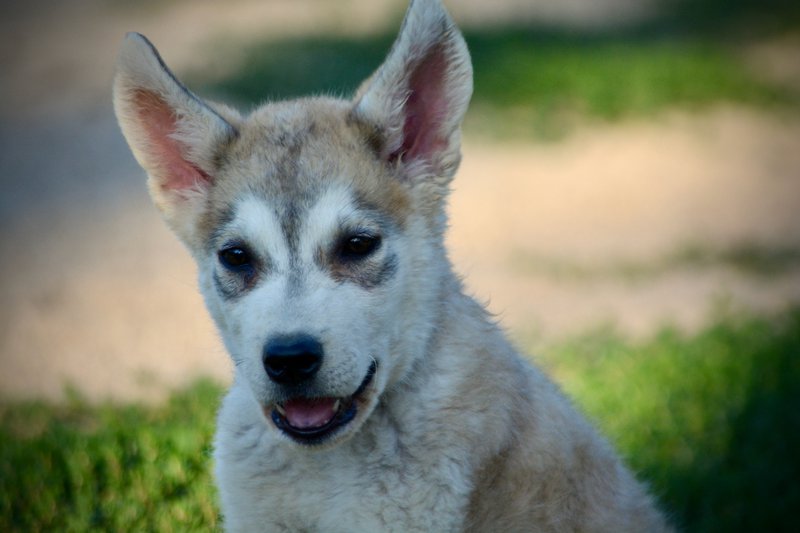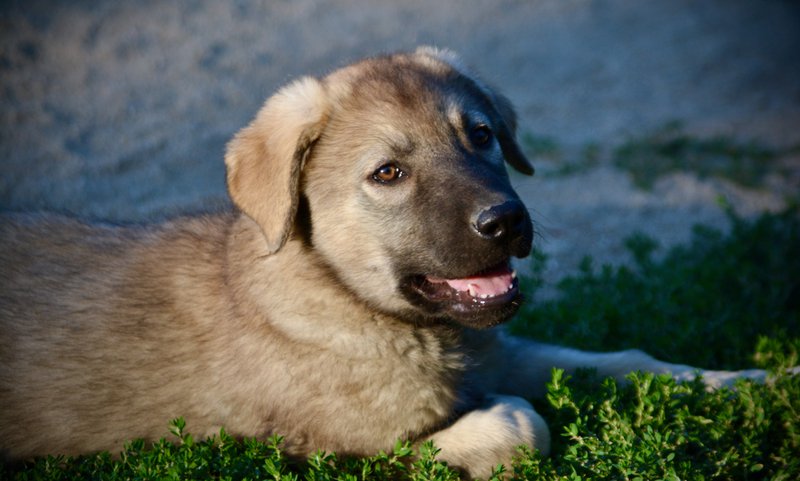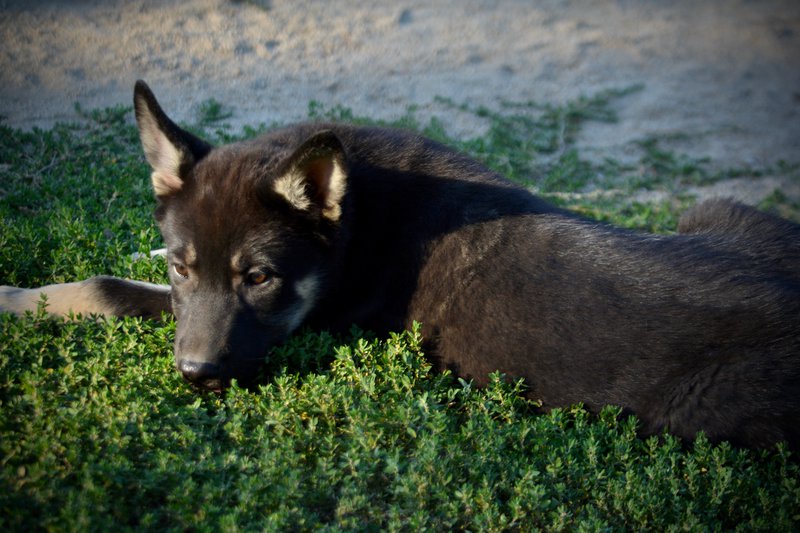20 BEST Things a New Puppy Owner Should Do:

I want to give you hope.
Because for every family that stumbles into confusion and disconnection, there are others who rise to the challenge and step into something truly extraordinary. Families who pause long enough to see the heart behind the eyes. Who listen to the unspoken language of a pup that thinks, feels, and bonds in ways unlike any dog they’ve ever met before. Families who choose to do things differently.
This is the story of one such family. They brought home their wide-eyed American Dirus™ puppy, uncertain at first but full of love and curiosity. And instead of pushing, demanding, or forcing him to fit into the mold of a “typical” dog, they leaned in. They watched. They listened. They honored his unique needs and, in return, unlocked the kind of bond most people only dream about.
Today, you’ll discover what’s possible when an Emotionally Sensitive Thinking Dog™ is truly seen, understood, and respected.
The result?
A relationship so deep, so resilient, it changes not only the dog—but the humans too.
The Johnsons brought home their long-awaited American Dirus™ puppy, hearts bursting with joy. They’d dreamed of this day for months, and now the soft, observant pup was padding quietly across their living room floor. They wanted to do everything right, but instead of chasing after every blog and quick-fix trainer, they decided to listen to their breeder’s advice and truly learn what made this pup unique.
The very first night, instead of shutting him away in the laundry room, the Johnsons introduced their puppy to a cozy crate—a soft blanket, a chew toy, and a cover draped across the top like a den. At first, he whined, but they comforted him with a gentle word and a calm presence nearby. Before long, he curled up in the safe little cave, feeling secure for the first time in this big, new world.
When it came time for socialization, the Johnsons didn’t throw him into a crowd of neighbors. Instead, they carefully invited one calm friend at a time, watching their pup’s body language. When he froze or leaned away, they gave him space. They let him approach on his terms, discovering that their pup blossomed with gentle, quiet introductions and built trust step by step.
Training began slowly, without pressure. When he hesitated before sitting, they didn’t repeat the command louder or push his bottom down. They simply lured him gently with a treat, praised him softly the moment he succeeded, and gave him time to think. When he tilted his head as if to puzzle through a task, they waited—patient, calm, trusting his process. His eyes lit up when he realized, I did it! They didn’t demand ten repetitions in a row. One or two successes were enough before letting him rest and reflect.
Each day brought its challenges—leash freezes, distracted moments, reluctance in new places—but instead of forcing him through, they slowed down, reassured him, and gave him choices. When he retreated under the couch, they didn’t drag him out. Instead, they set up his crate in a quiet corner, teaching him that it was his safe den where he could retreat, nap, or just breathe when the world felt overwhelming.
Weeks later, the Johnsons noticed their pup was different from other puppies they’d known. He wasn’t bounding at the door with reckless energy. He wasn’t wild about tug games or obsessed with food. But they paused, reflected, and chose to embrace his uniqueness instead of labeling him “lazy” or “stubborn.” They decided: This dog doesn’t need to be fixed—he needs to be understood.
One afternoon, during a family gathering, the Johnsons proudly showed off their puppy’s new “sit.” The room was busy and loud, and their pup hesitated, thinking. For a split second, they remembered the mainstream advice: “Be firm. Don’t let him win.” But instead of pressuring him, Mr. Johnson knelt down, softened his voice, and patiently lured the pup into position. The room went quiet as they showered him with gentle praise.
The pup’s tail gave a slow, confident wag. His eyes sparkled. And in that moment, he made his choice: It is safe to think. It is safe to trust.
From that day forward, the Johnsons and their Emotionally Sensitive Thinking Dog™ grew together in harmony. He followed them not because he was forced, but because he wanted to. His quiet dignity became the family’s pride, his thoughtful nature their daily lesson in patience and trust.
Visitors at the park admired his calm presence, his loyalty, his watchful eyes. “What a well-trained dog,” they’d say. But the Johnsons knew it wasn’t just training—it was understanding, respect, and a bond built from slowing down and listening to who their dog truly was.
In the end, they didn’t just raise a puppy. They gained a companion who thought deeply, felt deeply, and gave them the rare gift of a bond that would last a lifetime.

20 BEST Things To Do With Your American Dirus™ Puppy
(for Emotionally Sensitive Thinking Dogs™)
- Create a safe retreat (crate/den space) – Give your pup their own quiet sanctuary where they can recharge, sleep, or process the day without interruptions. This becomes their home base of comfort and security.
- Protect nap times like treasure – Just like human babies, these pups need frequent rest. Let them sleep undisturbed so their mind and emotions can reset.
- Introduce strangers slowly and mindfully – Allow your pup to watch and observe new people first instead of forcing interactions. Let them come forward when ready.
- Use gentle, respectful handling – Move their body only when necessary. Give them the chance to learn positions on their own instead of constant physical manipulation.
- Watch their emotions like a compass – Always notice signs of confusion, stress, or overload. Adjust your pace before they shut down.
- Build trust through predictability – Keep routines, tones, and expectations consistent. Reliability is the soil in which trust grows for these dogs.
- Teach at their pace, not yours – Slow down. Let them think things through. Reward effort and attempts, not just perfection.
- Use praise and affection as your main motivator – Gentle touch, happy voice, kisses, brushing, and silly high-pitched sounds work far better than endless food treats.
- Reserve corrections for true knowledge gaps – Only correct when you are 100% sure your pup fully understands the task in every context. Otherwise, assume confusion—not defiance.
- Proof commands in multiple settings – Help your pup connect that “sit” means “sit” no matter the environment, distraction, or position.
- Celebrate small wins daily – Every time they try something new or show effort, acknowledge it. That moment of recognition fuels their confidence.
- Provide calm, one-on-one bonding time – Deep, quiet moments—like brushing, stroking, or resting together—are gold for this type of dog.
- Allow observation before participation – Let them watch an activity first. When they feel secure, their natural energy and curiosity will emerge.
- Encourage gentle exploration – Introduce new environments slowly and reward their bravery for even tiny steps forward.
- Protect them from pushy strangers – Don’t allow people to invade their space, loom over them, or flood them with attention. Teach humans to respect boundaries.
- Support recovery time after challenges – When something is tough emotionally or physically, give them 24 hours (or more) to reset before pushing forward again.
- Use your voice like a guiding howl – Teach cues with warm tones, rhythm, and encouragement. Your voice becomes their emotional anchor.
- Respect their individuality – Don’t compare them to “average dogs.” Honor their unique style of learning, bonding, and thinking.
- Stay mindful in all interactions – Don’t shove food, force games, or overwhelm with constant activity. Be intentional in how you engage.
- Guard their spirit fiercely – Advocate for them, protect their sensitivity, and never let others dismiss them as stubborn or lazy. When respected, they will give you their whole heart.
